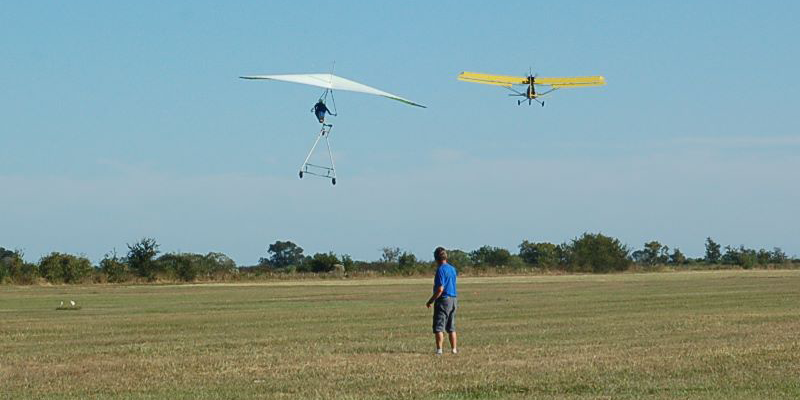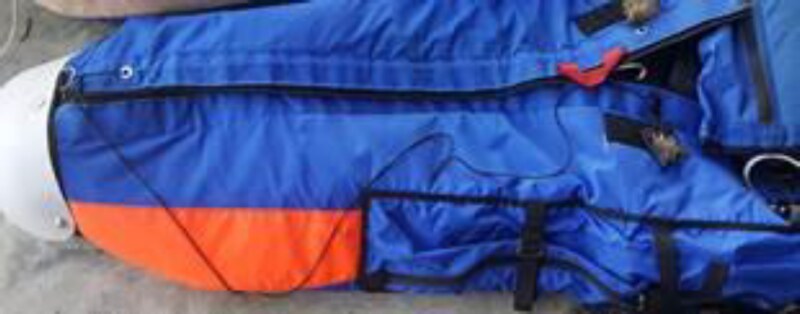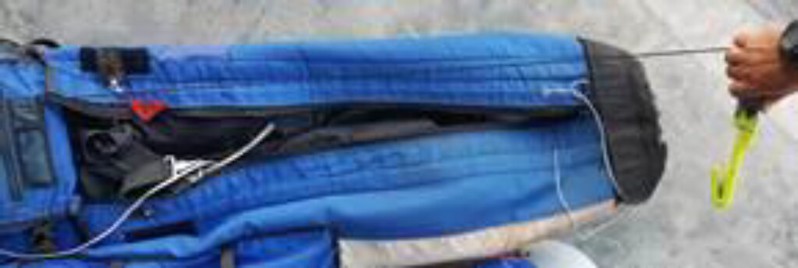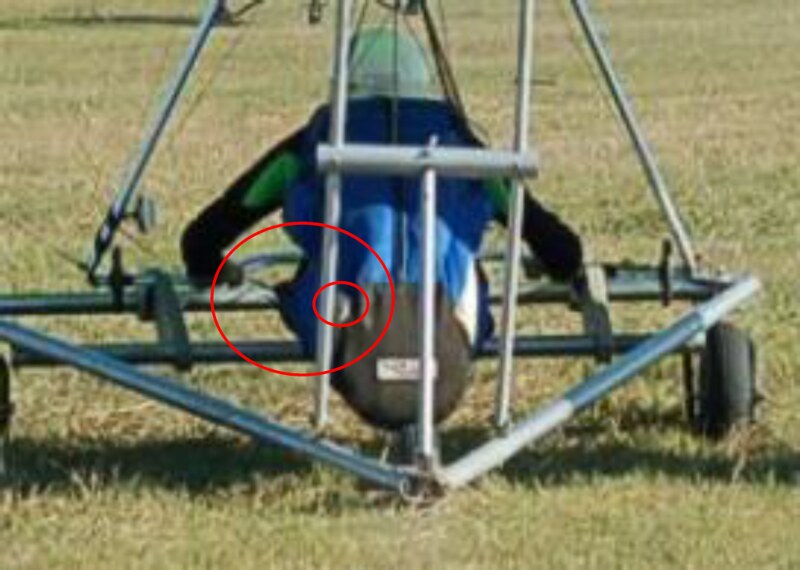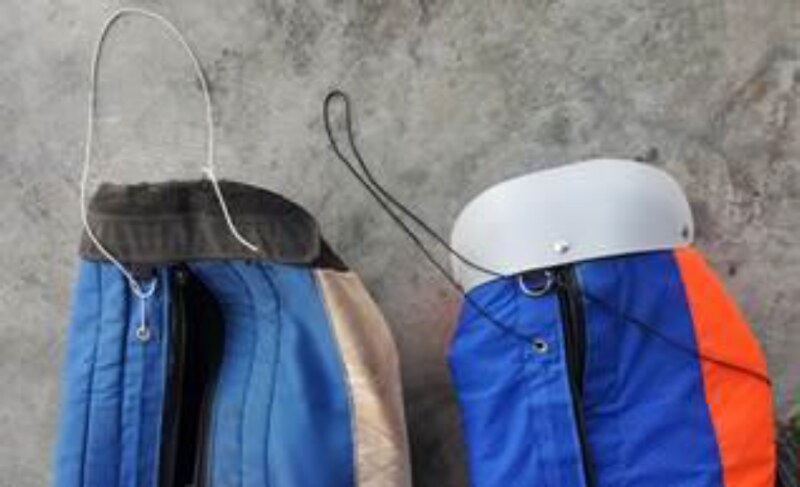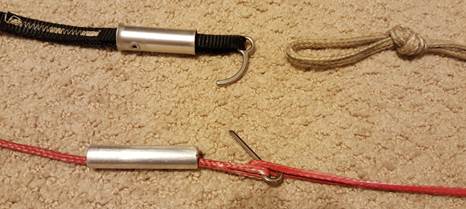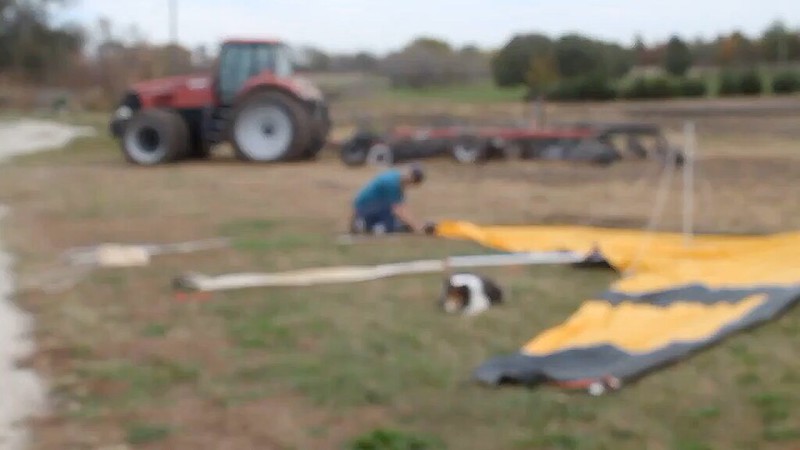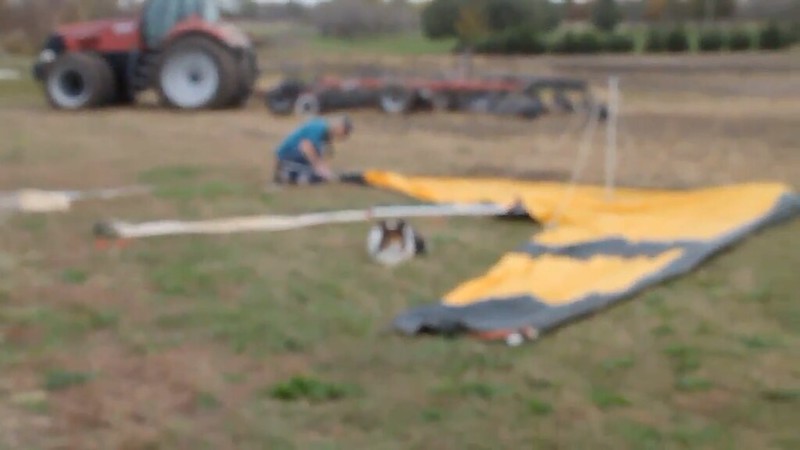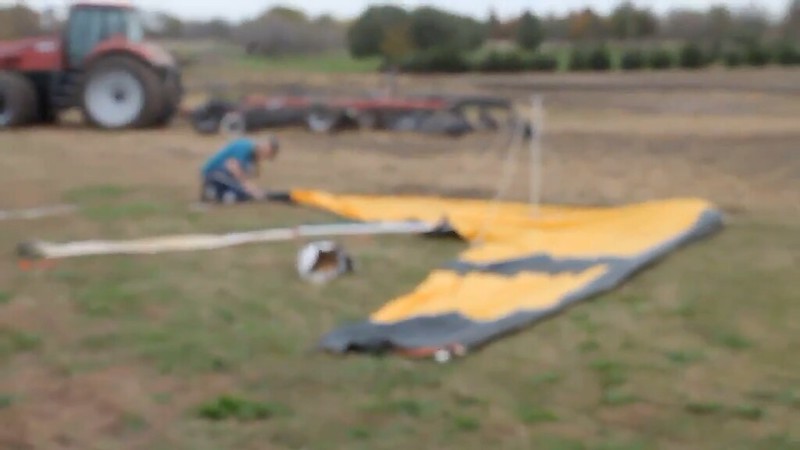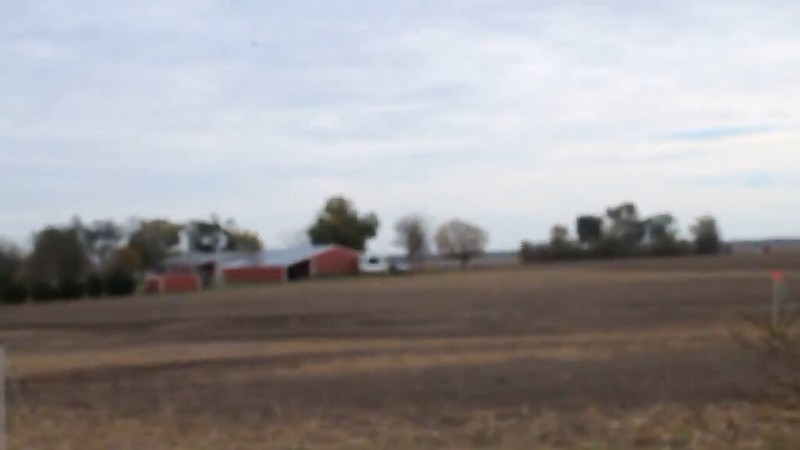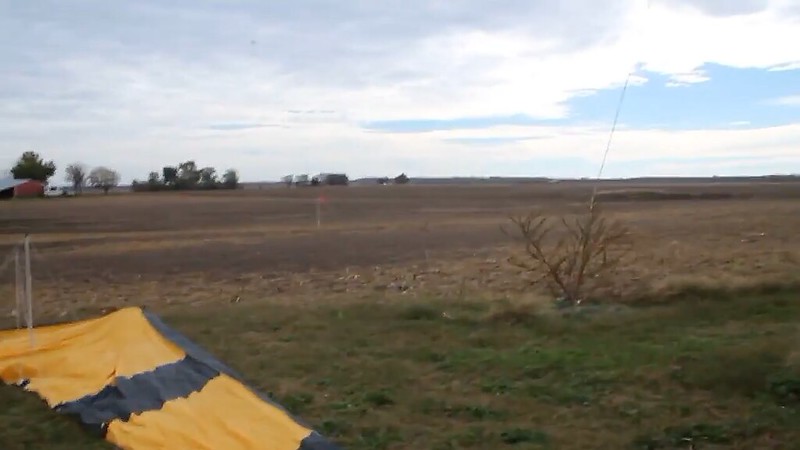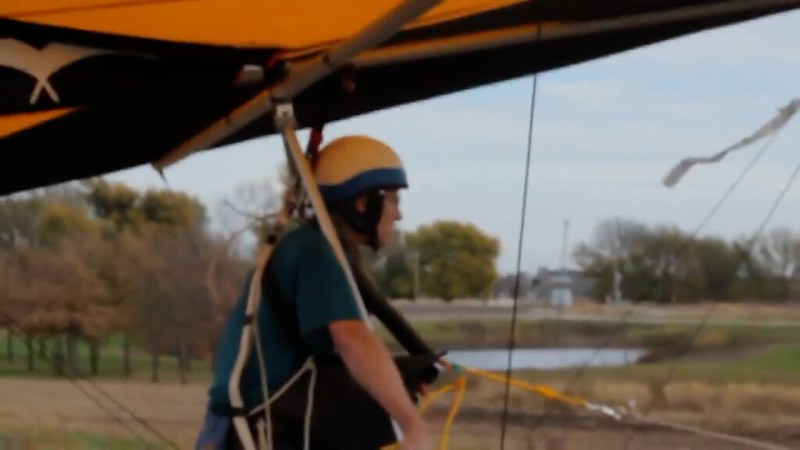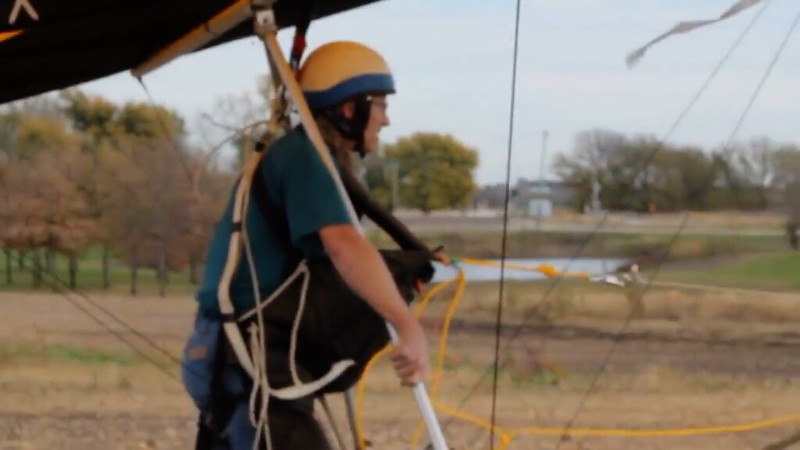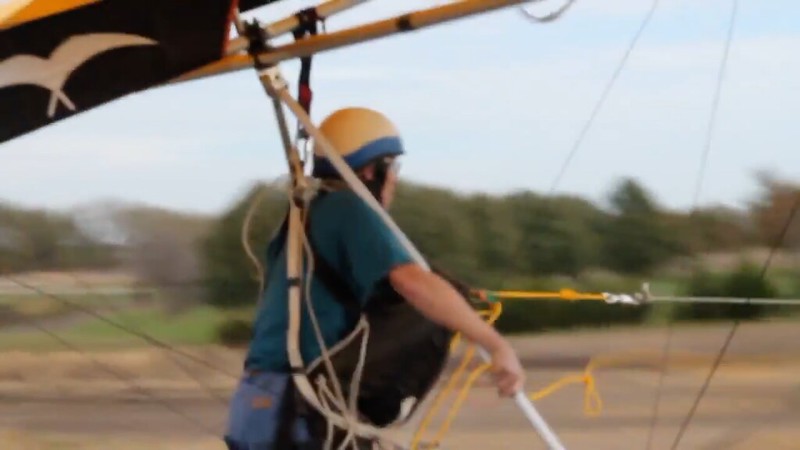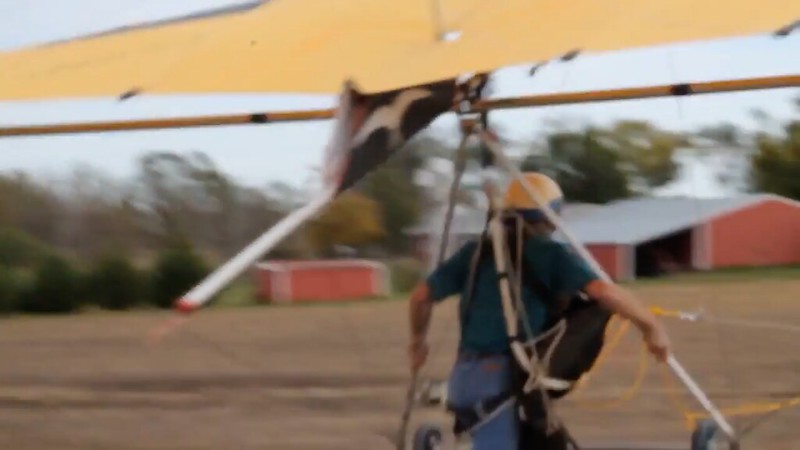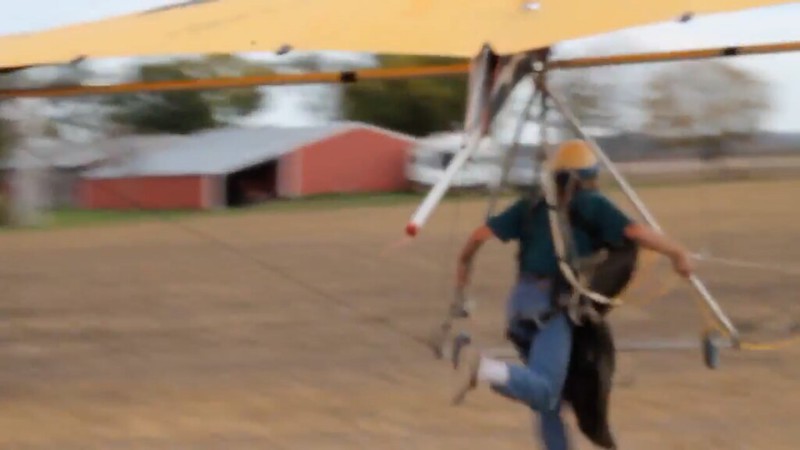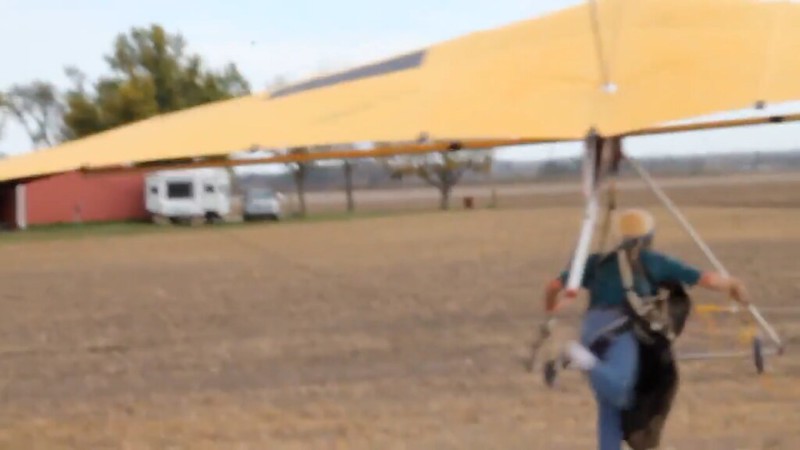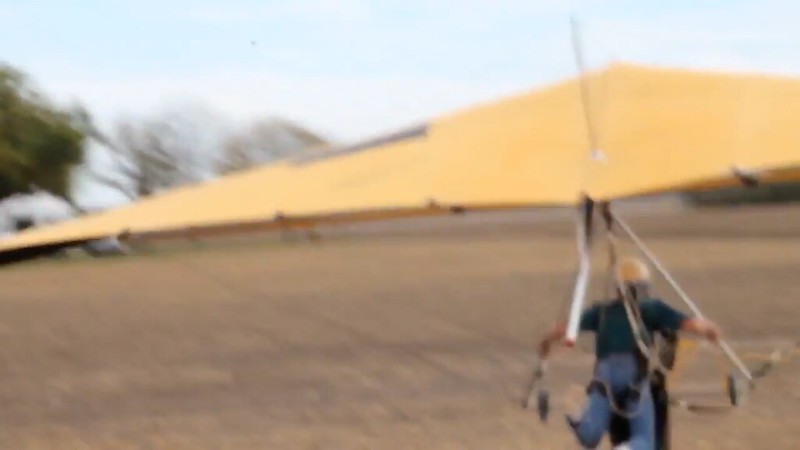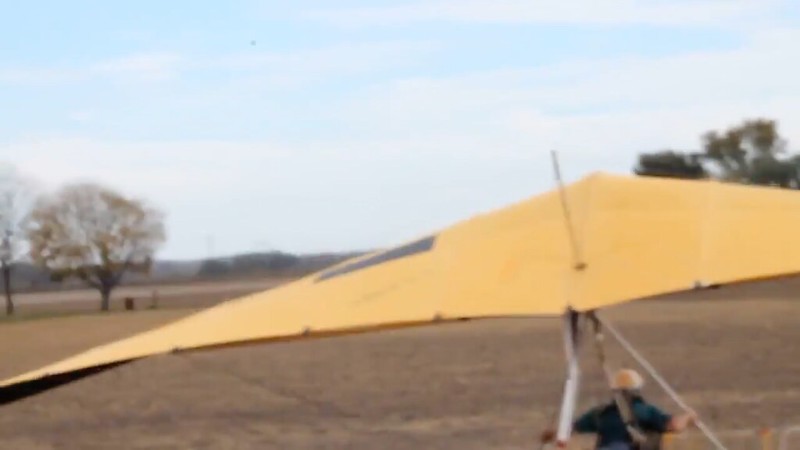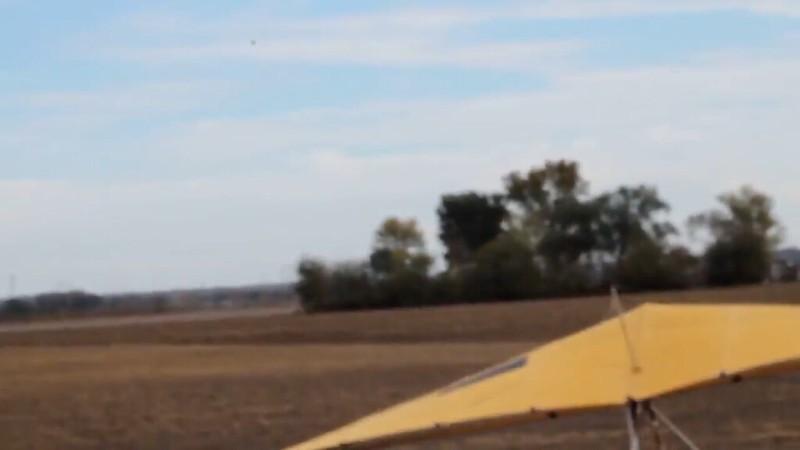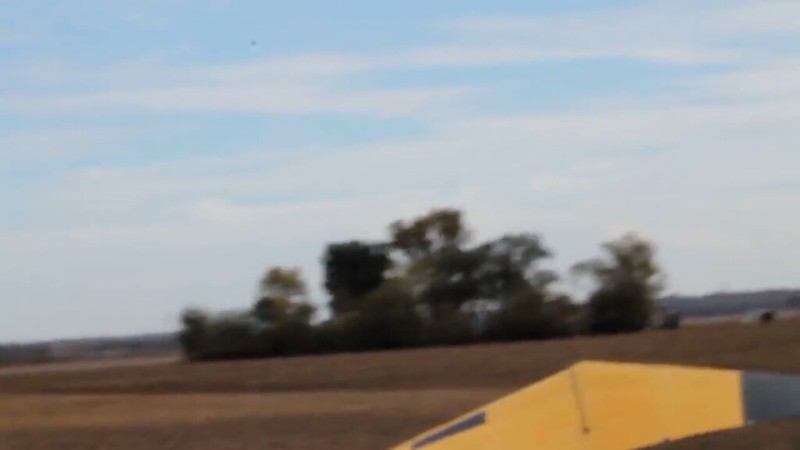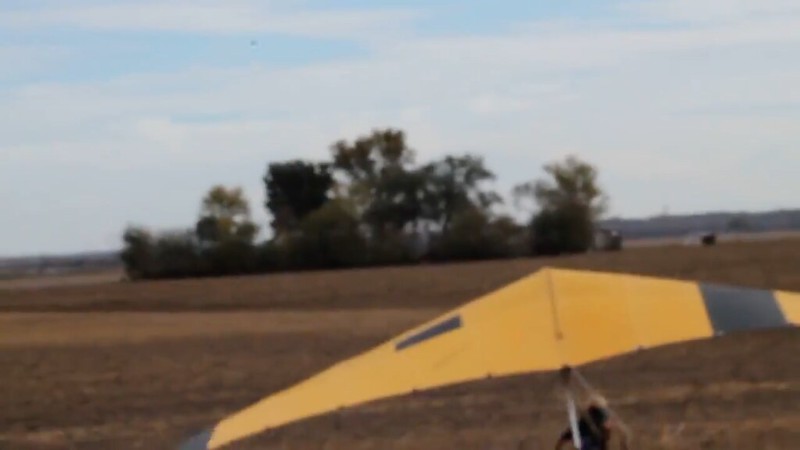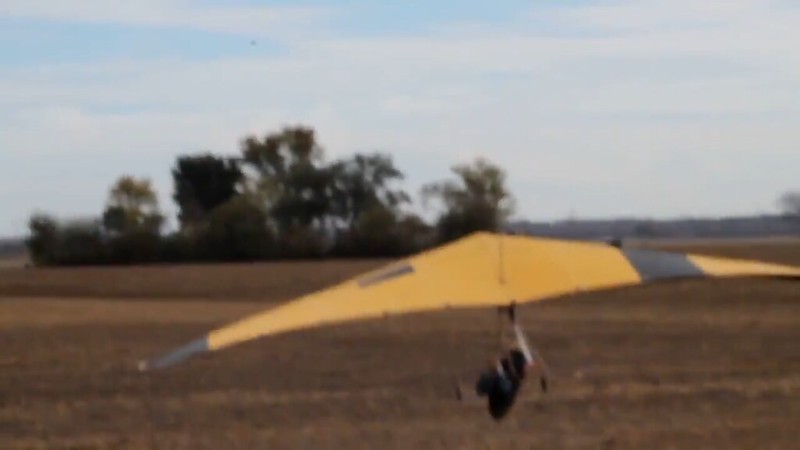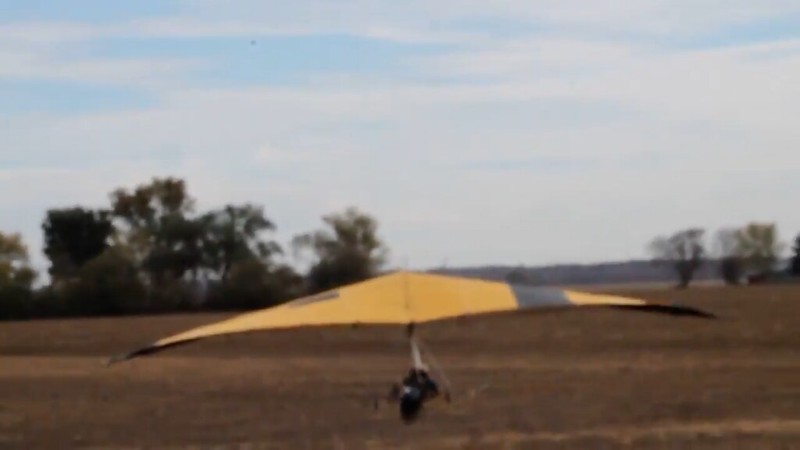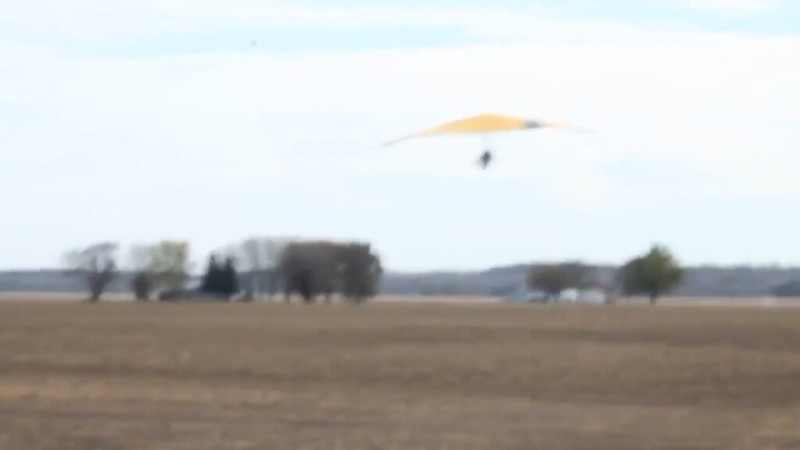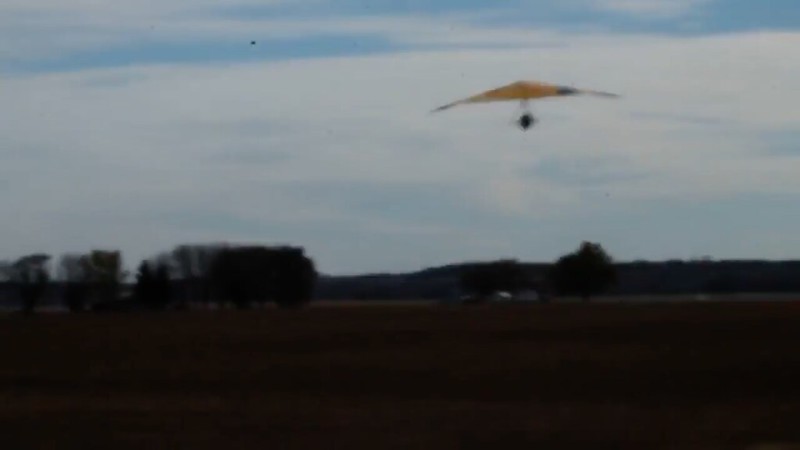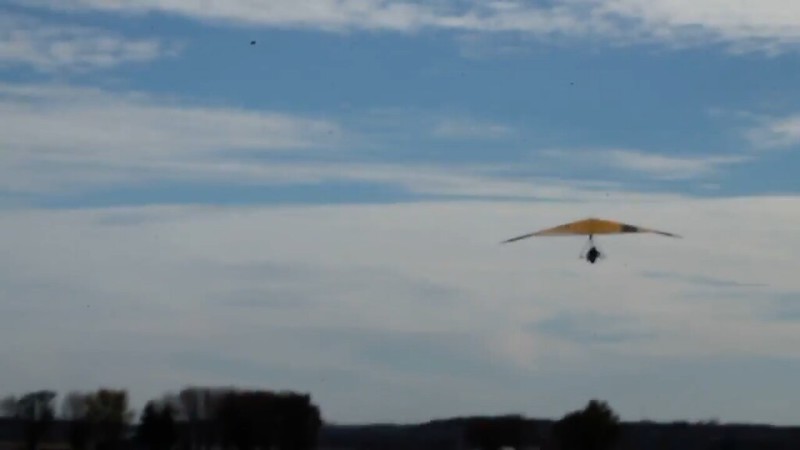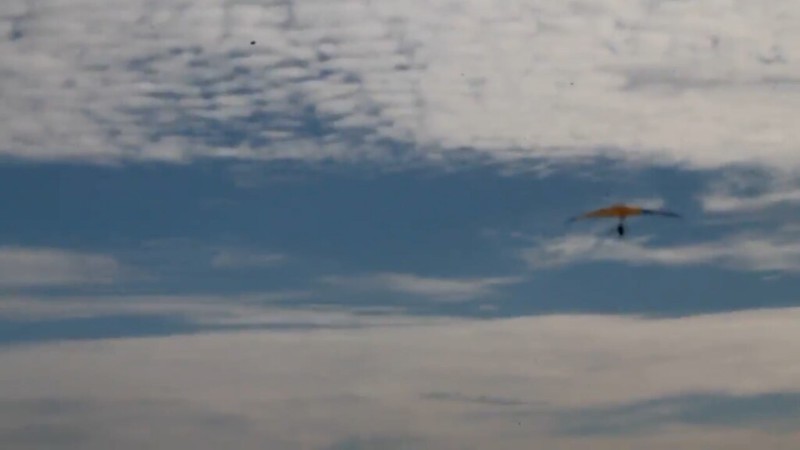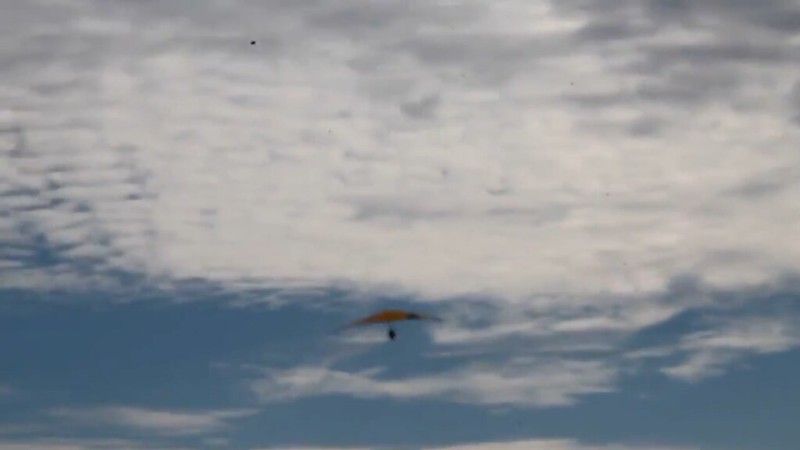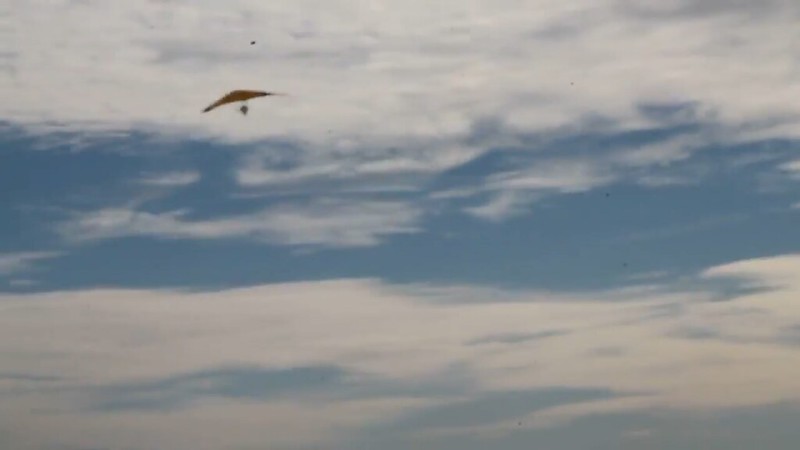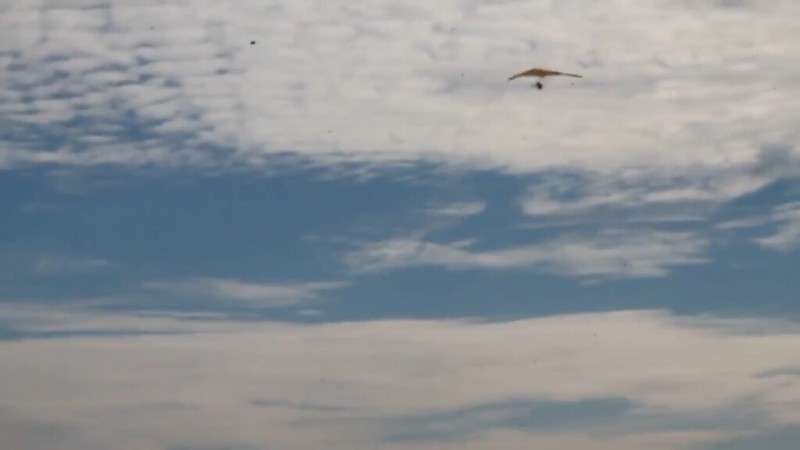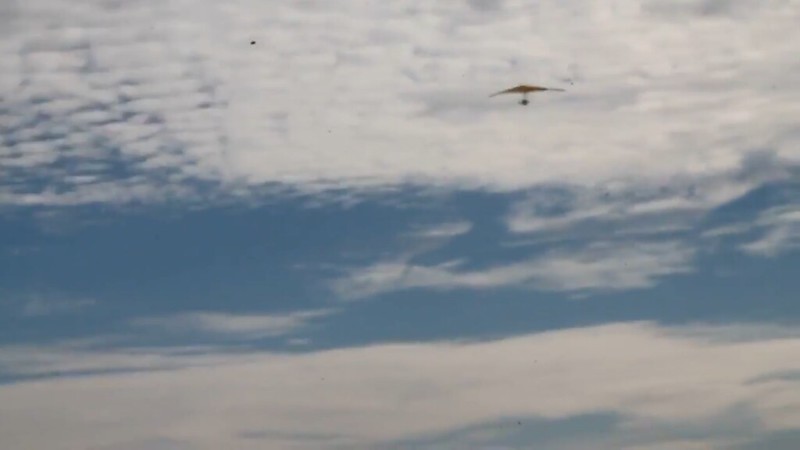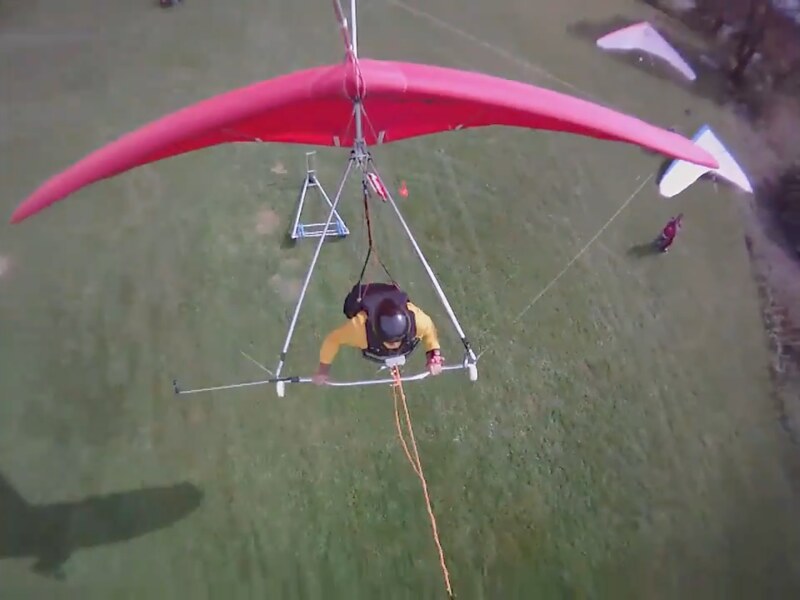Richard Thorp
Oh. So getting a hook knife takes precedent over checking for loose lines before launch. I guess that makes sense - given how quickly after launch one finds out whether or not loose lines are an issue.Launch Dolly Caught on Harness Zipper Line and Taken Aloft
Wharton, Texas Sunday 30 October 2016
First:
Get a hook knife if you do not have one!
Check for loose lines before launch
Boy we're seeing this crappy argument that being on tow is somehow safer than being off tow a lot now that Jim Keen-Intellect Rooney has tired of trying to educate all us muppets and protect us from ourselves and our decisions as pilots. And strangely we don't seem to be seeing the surge in relevant carnage one would have predicted.if you are flying and climbing, continue - it gives thinking time and if needed, parachute opening time.
Stupid launch dolly.Following is a summary of the incident last Sunday where a launch dolly caught my Wills Wing Z5 harness and was taken aloft.
Unless you consider the stupid launch dolly.No injuries...
GAWD you're lucky to have had a tug driver who could fly so FANTASTICALLY. Just look at that flying:...in no small part to the fantastic flying of Tiki who saw the situation and carefully pulled me to a safe height where I could deal with it.
Has any of us ever seen flying that FANTASTIC before! I shudder to think what might have happened if you'd had some stupid hack like Keavy Nenninger in front of you.
SIGNIFICANT?Pilot Narrative:
After a normal ground run, into a slightly crossing wind, I felt some significant bumps on the boot of the harness as the glider left the dolly - and something significant tugging at me.
http://ozreport.com/forum/viewtopic.php?t=9230
Departing the launch cart
Couple hundred pounds. Goddam right it's SIGNIFICANT. I'm surprised your leading edges didn't buckle.Jim Rooney - 2008/05/04 10:50:46 UTC
That "pop" out of the cart is cuz one of two things.
A) you're lifting the cart into the air and dropping a couple hundred pounds when you let go... might have a bit of an effect eh?
Must've been a bit rough - given all that fantastic flying Tiki was doing.The glider remained under control, although at this stage there was clearly something strange - it felt exactly as it was, a weight that would swing like a pendulum a few seconds after a weight shift was applied. At 50 - 100ft I looked down and saw the dolly hanging below me from the boot of the harness, hanging from the zipper line. Given that the glider was flying, I had reasonable control over it, and we were climbing I simply focused on following the tug.
Plus smooth air is consistent with all the towing theory, instruction, training, equipment you use.Luckily the air was fairly smooth - and provided I was not too aggressive with the weight shift the main effect of the dangling dolly was to apply a delayed yaw to my harness - the process was: weight shift - glider responds, relax to stop the delayed swing of the dolly shifting my CG and just let it rotate my body about the hang strap.
So many tombstones on which we could engrave that.It got a little more complicated if I needed multiple inputs and rough air would have been a big problem.
Yeah, an increase in the safety of the towing operation would've been about the LAST thing you'd have wanted to deal with in that situation.I was also concerned not to break the weak link...
How is it possible to just climb with a tug that's flying FANTASTICALLY with minimal drama?I really wanted some height, so the focus was to just climb with the tug with as little drama as possible.
I wonder what altitude you need for a couple hundred pound dolly to hit terminal velocity.I could see the dolly was hanging by the zipper cord just caught round one of the small bolts that protrude from the bottom of the side rail - and a little concerned that it would fall on something / someone - as well as hoping that it would just fall ...
Once above 2000ft-
Gawd I'm getting sick and tired of hearing this crappy argument....I started to gently experiment with possible solutions - the climb gave me time to think it through - and generate a bit of a plan.
And taking hands off the control bar is never a problem under hang gliding aeronautical theory - 'specially the towing flavor.There were 3 options. I had a hook knife and provided I could reach to the boot of my harness I could cut the line. I could also pull the zipper tab - with great effort as I had to lift the dolly and get to the line or knot - that would take 2 hands but at least was theoretically possible.
Couple hundred pound launch dolly? I hate to think.I could also use my chute. Since we were still climbing, and I was in control I tried to think through the consequences - if I cut the line in the wrong place and it hung up again and jerked the glider what would happen?
You suddenly have a hundred pounds less wingloading? (Somebody put one of these things on a scale so's we can get a reasonable number. I'm guestimating under half that.)- could I reach the boot? What would happen when you unload the glider by 100lb suddenly?
Once you release you no longer have the other option. And your flight time WILL become very distinctly limited.Should I release then try or stay on tow and try?
If you can reach your easily reachable release you can reach anything.I also was trying to see what I could reach...
Must've taken an unimaginable amount of fantastic flying on Tiki's part.- which tended to put me out of position but gave me a good idea what was possible, and after some rehearsals I was feeling fairly confident I could shed the dolly - we were at around 5000ft by then.
The chute which Kelly Harrison never considered as an option.My plan was - try to hook knife the cord at the boot - if not then release and use 2 hands to cut the knot at the draw tab and if I ended up below 2000ft, pull the chute.
Interesting choice of words - given the situation.The first option went without a hitch.
Well, we know that ONE of the pilots was flying fantastically.Analysis - Pilots action
Maybe you should've had more discussions / chit chat with many people about the actions to take in order to NOT end up taking a cart aloft.1. The discussions / chit chat I had had with many people had included the actions to take if you end up taking a cart aloft.
Fuck that crappy argument.Therefore the thought of releasing or anything else except carry on climbing with the tow did not occur.
2. The time spent climbing was massively valuable - it took a while to build a plan and rehearse it.
Yeah, that would've been fuckin' IN EVITABLE. No way you'd have been able to survive landing with the cart dangling, rolling, dragging behind you.3. I missed an easier option - the line is exposed all the way down the harness on the left side, from toggle to boot - see pic below of Alex's Z5. I could have cut it at my waist much more easily. This was out of sight... but would have been easier.
http://c2.staticflickr.com/6/5825/22761928668_57e03df835_o.png
4. Low down, early in the tow the only option would have been the chute. Betty' class told me that. It was clear that to land with the cart dangling and attached to the harness would have pitched me face down.
Razor-sharp cutting tool you can use to slash through lines in an instant.Analysis - What more could have gone wrong?
1. There were 3 significant factors that enable a good outcome:
-a. I had an accessible hook knife (if you have not got one - or it's tether is not long enough to reach everywhere you can reach (I use 1/8" bungee for the tether) please get one!
Which would be a BAD thing?http://c2.staticflickr.com/6/5544/30851998081_5e97343263_o.png
-b. The air was smooth. Rough air would make control more marginal and more importantly with the extra weight of the dolly and compromised control may cause a rapid low height weak link failure.
Zack Marzec configuration! Brilliant choice!I use the light greenspot weak link and protow.
Why? If something ain't broke then why fix it? (We need to ID and test this line. Fuckin' amazing how well these u$hPa/Industry scumbags have been able to keep the focal point of their safe towing system an insider secret.)I do not get breaks but I will change to the heavier green line like many others.
I'm glad your terrain found your dolly acceptable.-c. I was over terrain that could safely accept a dolly.
So what DID you preflight? List the stuff you found more important.Analysis - Immediate Cause
The immediate cause was the loop of zipper line that is at the boot of the harness. It is just visible in the pic below. Most times I will pull this up to the waist. I failed to do so this time. It caught on the bolt that protruded below the upright, where the threads were approx 1/8in exposed above the nut (circled)
http://c2.staticflickr.com/6/5448/22761928428_e190f4f0da_o.png
It was an unsecured line. Who gives a flying fuck HOW it caught?Here you see the loop at the boot of the harness. The white line is my cut line, the black one is another Z5 harness.
http://c2.staticflickr.com/6/5780/22761927938_069f11c712_o.png
My hypothesis is that the combination of the wind blowing it back and the harness boot swinging close to the dolly caused it to hook onto a small bolt underneath the V cradle upright.
Not for me. Never even close over a span of decades.As the rear of the dolly was slightly lifted by this it rotated tail over nose, thereby wrapping the loop a half turn around the tube, making it very unlikely to fall off.
Analysis - Prevention:
1. By checks
-a. Sloppy preflight checks by me - I often pull the zipper line up - but it is not really in the preflight check - it is more of a "let's get tidy before launch" action. Easily forgotten
Why not just zip up the harness?-b. Organise the zipper line inside the harness boot before laying down in the harness
The fuckin' ground crew should be LOOKING for the stuff that's hard to see. They don't give flying fucks about pro toad bridles, easily reachable bent pin releases, velcroed on bicycle brake levers, lethally and illegally understrength weak links, weak links that offer ZERO protection after bridle wraps, wheel-less basetubes... And they can't be bothered to check for snag threats which are likely to demolish launch carts at a minimum in an environment which not all that infrequently kills gliders due to normal total shit safety margins?-c. Ground crew: It is practically hidden from the front - so it is unreasonable for the GC to see it unless it is built into the hang check as part of 'lines'.
Oh. They check THIS:We could do this, along with the release check
http://ozreport.com/20.183
Barrel release forces
bent pin piece o' shit excuse for an aerotow release and if you've got one then it's OK.Richard Thorp
Texas
I have been laid low with sinusitis for the past week - so thought I would do a release force test on my barrel release - something that I have been wanting to do for a while:
I use the top black one in the picture - I forget the source of it but it is a thin wall aluminum barrel 3/4in inside diameter with a stainless steel curved pin. The tension is limited by a single loop of the fishing line I have used as a weaklink since Hempstead. I do not have a good way of measuring forces - I used a lever and baggage scale. To the best I can determine the weaklink was failing around the 200lbf mark, so all the tests done were probably between 150lbf and 200lbf
Anyway. At this "high" load of 150 - 200lbf, the top black release takes a VERY VERY strong pull to open it. It always opened, but the release force is MUCH higher than I am comfortable with. You have to be sure to grip it properly when releasing. I can really see how a first attempt could potentially fail. It could be helped with a larger diameter ring around it so that if you slide your hand down the line there is a better shoulder to pull against.
I have another barrel release - the lower one with the red line. This I made myself with thick wall Al tube 3/8in inside diameter and a straight parachute pin. This is very similar in geometry to the 'Getof' release I have seen around - and is a design I like. The combination of the straight pin that has a better mechanical advantage and the smaller tube means the release force is much smoother and very easy - 2 fingers can easily operate it.
So - what is the conclusion?. Well this is a personal question of risk tolerance, but for me I feel the 3/4in design is very marginal. I am now not wanting to use it as my primary and have to fight with one hand off the bar to effect a release. I also can see very little sense in using it as a secondary release - secondary releases will be used under high stress situations and often with an unpracticed hand with the release in an awkward position. For approx $10 and 10 minutes work I can make up a much better alternative.
Just food for thought.
So that stupid people will have less reason to check critical preflight items.2. By design
-a. Remove or tape over or otherwise minimise all sticking out catch points (I will do this at the earliest opportunity!)
Lookout has a net off the lip of the ramp...
8-2401
http://c1.staticflickr.com/3/2926/14074537022_03a98e4a57_o.png
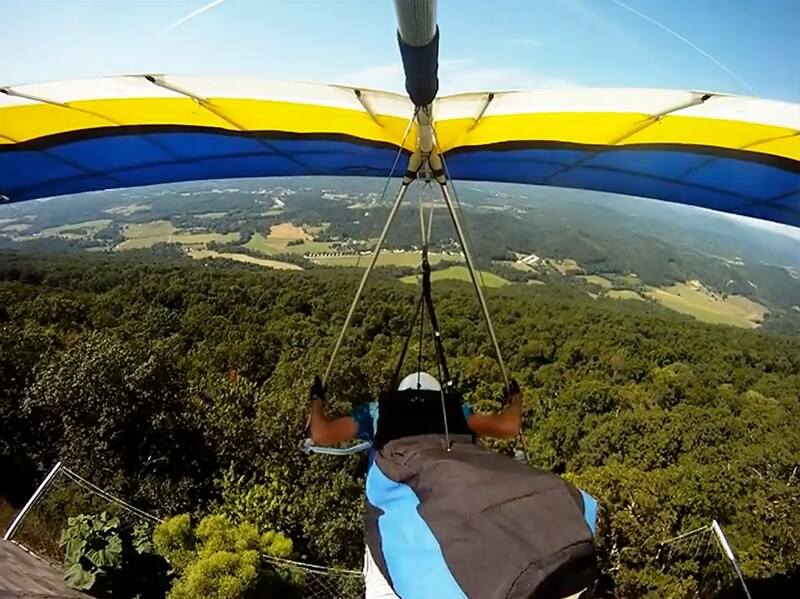
...so why bother doing hook-in checks?
See above.-b. Fit a smooth cup in the vee of the rear of the dolly (imagine a bucket cut to cradle the harness boot and keep it clear of all metalwork and rotating wheels
And a single loop of 130 pound Greenspot should be just about right for the job. Hard to go wrong with a proven system that works.-c. Fit a weak link to the zipper line
Install a parachute which blows when a sensor detects a rapid increase in barometric pressure.-d. Extend the dolly wheelbase to give greater clearance between boot and frame
Zip the fucking harness up when you get on the cart.-e. Design the harness with no loose lines at the boot
Thanks, Richard. And thanks for all the participation and support you've given Kite Strings.Safe flying
Richard
